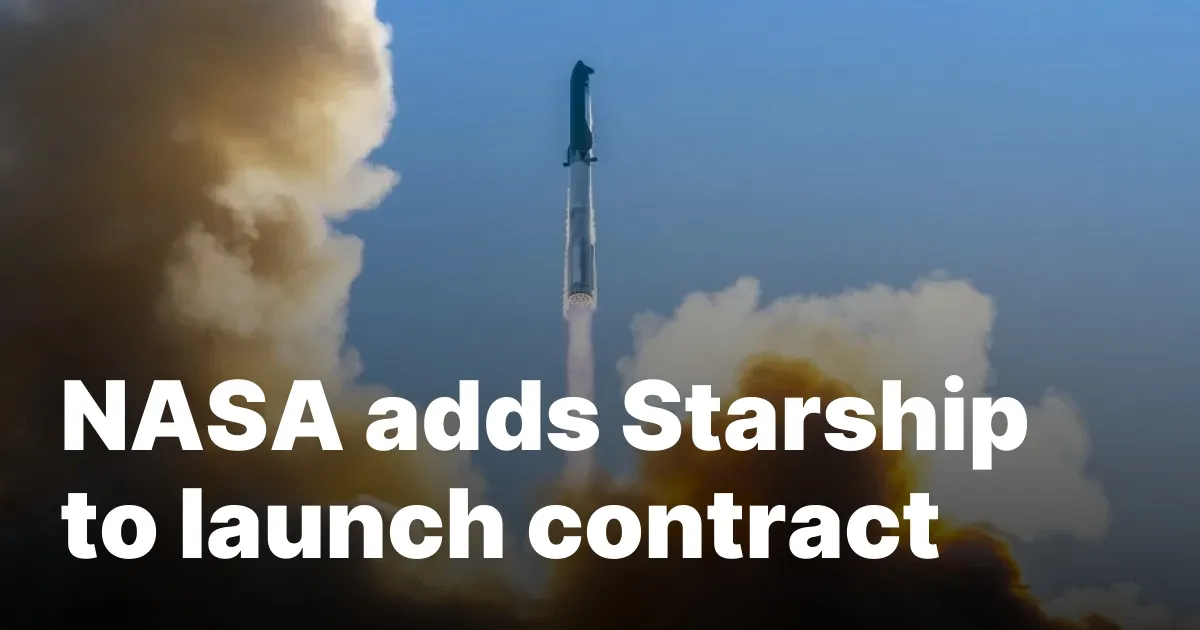
In a significant development for NASA and the future of space exploration, the agency has officially added SpaceX’s Starship to its NASA Launch Services (NLS) II contract. This announcement, made on March 28, indicates a pivotal step towards utilizing the Starship vehicle for various missions, although it still requires extensive testing before it can undertake major launches.
The NLS II contract serves as a framework for NASA to procure launch services for a variety of scientific and exploration missions. Currently, SpaceX's Falcon 9 and Falcon Heavy rockets are already included in this contract and have been utilized frequently over the past few years. Notably, these rockets were responsible for the successful launch of the SPHEREx astrophysics spacecraft and the PUNCH space science mission on March 11.
Other launch vehicles included in the NLS II contract comprise Blue Origin’s New Glenn, Firefly Aerospace’s Alpha, Northrop Grumman’s Pegasus XL, Rocket Lab’s Electron, and United Launch Alliance’s Atlas 5 and Vulcan Centaur. However, the inclusion of Starship, which has yet to demonstrate its capability to deliver a payload into orbit, does not automatically qualify it for all NASA missions.
NASA categorizes vehicles under the NLS II framework into three distinct risk categories based on their flight history and the level of oversight involved:
Category 1: This category is designated for "high risk" vehicles, which can include those that have not yet completed their inaugural flight. These vehicles are limited to NASA missions that are classified as Class D, which typically involve lower costs and higher risk tolerance.Category 2: This category is intended for "medium risk" vehicles that have between one and six consecutive successful launches. These vehicles are primarily used for Class C missions, which carry a moderate risk tolerance, as well as Class D missions.Category 3: Vehicles classified in this category are considered "low risk" and must have demonstrated between three and fourteen successful launches. This category allows for participation in all classes of missions, including high-stakes Class A missions like the Europa Clipper and the Roman Space Telescope.On February 17, Blue Origin announced that its New Glenn rocket achieved Category 1 certification under the NLS II contract shortly after its first launch.
While SpaceX’s Starship has been added to the NLS II contract, its immediate application for NASA will primarily focus on the Human Landing System (HLS) program. SpaceX is actively developing a lunar lander variant of Starship intended for use in the Artemis 3 and Artemis 4 crewed lunar landings scheduled for later this decade.
In line with this effort, SpaceX submitted an application to the Federal Communications Commission (FCC) seeking authorization for communications with the Starship vehicle. This application was formally accepted by the FCC on March 27. SpaceX expressed gratitude for NASA's trust in the Starship launch vehicle and its variants, stating, “SpaceX requests spectrum resources that will support this major national priority, facilitate the launch of next-generation satellites, and maintain American leadership in space over the long term.”
The FCC application submitted by SpaceX outlines the operational parameters for Starship, including its planned activities in low Earth orbit. These operations will encompass satellite launches and propellant transfer missions to a depot for future missions beyond low Earth orbit (LEO). The altitudes for these operations will range from 181 to 381 kilometers at inclinations between zero and 90 degrees.
Furthermore, SpaceX has proposed a “Final Tanking Orbit” for secondary propellant transfer during crewed missions to the moon, operating at an orbit of 281 by 34,534 kilometers, with certain allowances for altitude variation. Additionally, the application preserves the option for Starship to operate in a low lunar orbit, defined as being 120 kilometers above the moon, as well as in a near rectilinear halo orbit between 3,000 and 70,000 kilometers—an orbit NASA plans to utilize for upcoming Artemis missions, including the lunar Gateway.